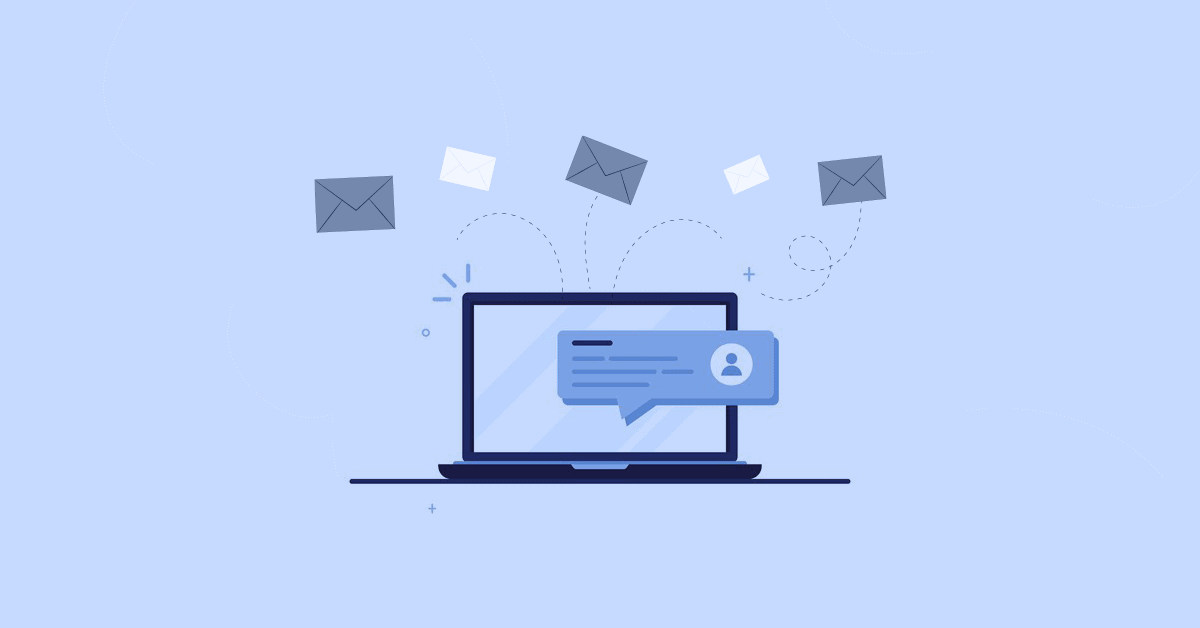Don’t you think we have stressed enough on how important emails still are despite the noise that social media has created in the last several years? Of course, and we have data to prove to you their importance. According to a report by Radicati, email is expected to reach 319.6 billion by the end of 2021.
And while that is just one report, email has proven to be that one channel generating the highest ROI for marketers across B2B and B2C industries. The average open rates of email marketing campaigns across different industries are recorded around 22. 87%.
Moreover, the channel is said to deliver a click-through rate of 3.26%, with an unsubscription rate of only 0.53%.
But does this show that emails deliver results for businesses when it comes to “conversions”? Not really – because emails are just a one-off thing and they can be easily forgotten in the large pool of other mails that get piled up in your inbox.
A core push notifications strategy is crucial!

The problem is that the majority of emails are not read within seconds or minutes, unlike push notifications or text messages. It is precisely the reason why we must develop a core push strategy. As per an analytics report, 60% of enterprise brand users opt-in or give their consent to receive messages.
Push notifications are highly effective for many demographics, including millennials, with about 84% of them claiming to respond to push notifications they have received. This “eagerness to respond” might not be visible when it comes to responding to emails.
No wonder that 70% of consumers found all types of push notifications, including order updates and location-based messages, to be valuable. However, even if both email and push fetch you excellent results, different strategies can result in one unhappy and over-targeted customer base.
This is why you need to unify email marketing and push strategy to ensure your business goals are met and conversions are driven, and most importantly, your customers are happy:
1. Engage with emails, re-engage with push

70% of customers still choose emails as a way to communicate with brands and businesses. When they believe they have been sent something of value, there’s an opportunity for effective push notification marketing.
With a push, you can assure the customers that they are in control and can stop the flow of information whenever they wish to. Companies like Wigzo offer tools powered by machine learning that help track your website visitors as well as customer behavior.
This helps you understand what they are looking for, where they come from, and what you can do to make their overall experience better. So use this data to personalize your emails while sending offers on products and your browser notifications when promoting a new product or offering a discount on one!
Customers love to be treated like royalty, and if you are hitting the right spots with them, your conversions are secure.
2. Deliver the same message across channels

According to Forrester, the push isn’t a replacement for emails, text messages, or other direct messaging tactics. It has to complement emails and be a core component of any direct marketing and relationship program. The challenge is not to repeat any information. As mentioned before, there’s no point in over-targeting the customer base.
For instance, if you’re launching a new product, send an email about it, and then re-engage the customer or remind him or her of the new product line, send a push notification.
The key is to build a balanced strategy. Your customers shouldn’t be bombarded with overly personalized messages – they will freak out!
3. Re-engage the customers, remind them
The high cart abandonment rate is one of the main issues for an eCommerce brand. It hurts when a prospective customer puts the product in the cart but doesn’t complete the purchase cycle. Using Wigzo’s personalized & trigger-based notifications, it is possible to convert 33% of people abandoning their carts.
So while emailing them to remind them about the product lying idle in the cart is equally essential, it is also vital to send push messages that are even more personalized just to grab the customer’s attention.
And suppose customer segmentation is a real problem for a brand. In that case, it can easily categorize the audience based on their demographics, so that the messages sent across channels are personalized. Combine demographics and data of previous interactions, and you can easily create one-to-one personalized emails.
4. Make this a base for omnichannel marketing automation

Omnichannel marketing is central to e-commerce growth and success. Gone are the days when different channels powered by siloed data were used to acquire and convert customers. It is all about customer experience now, and email marketing automation aligned with a push strategy can be a major asset for your revenue growth. Through automated emails and push, you can deliver personalized communication and shorten your sales cycle significantly by boosting the overall CX.
Want to send personalized notifications? Wigzo can help!
Stop sending generic push notifications when you know that personalization will fetch you higher conversion and retention rates. Personalized notifications lead to at least 25% of click-throughs as compared to generic ones.















